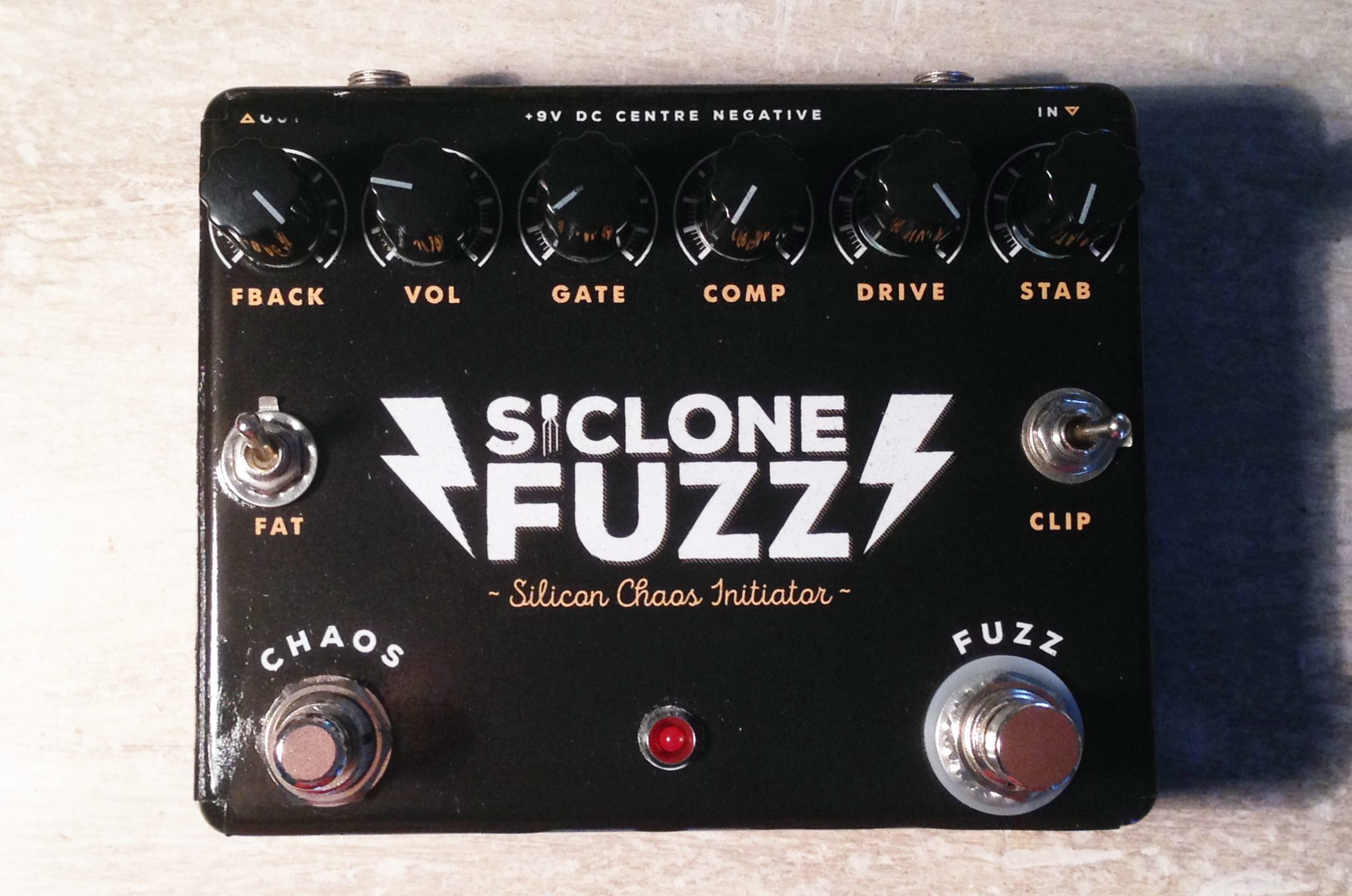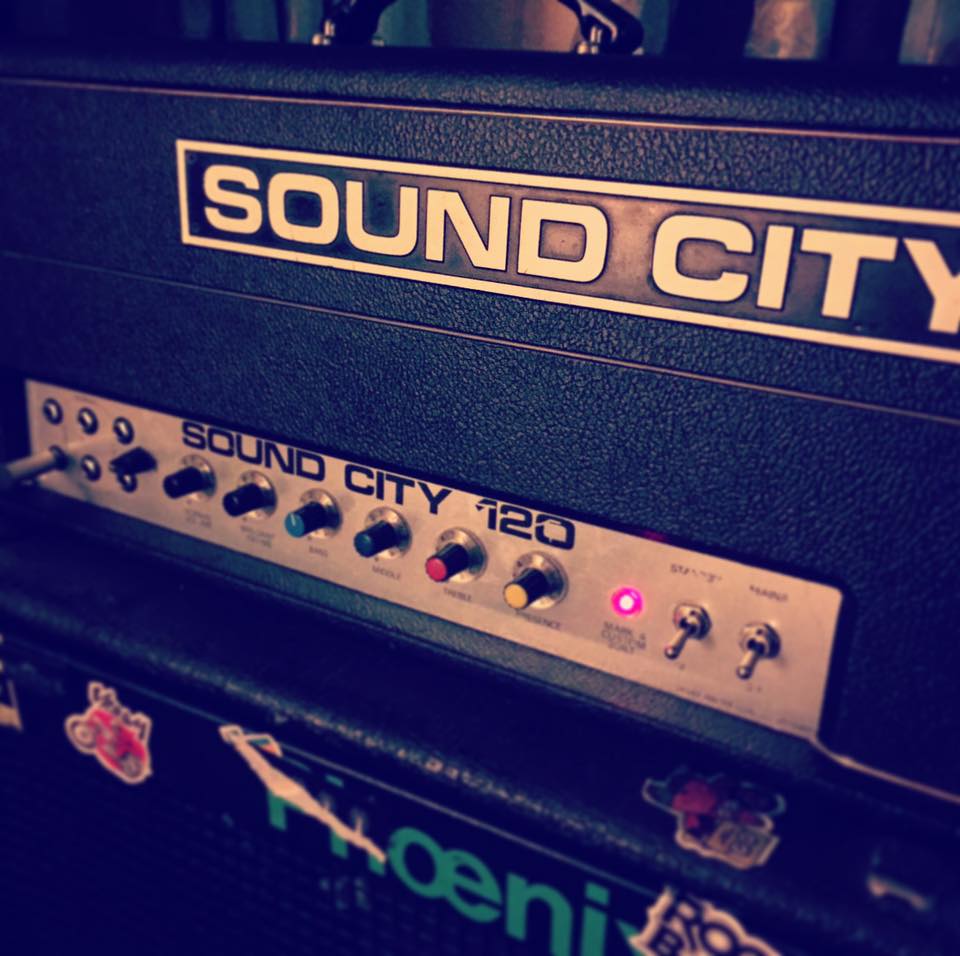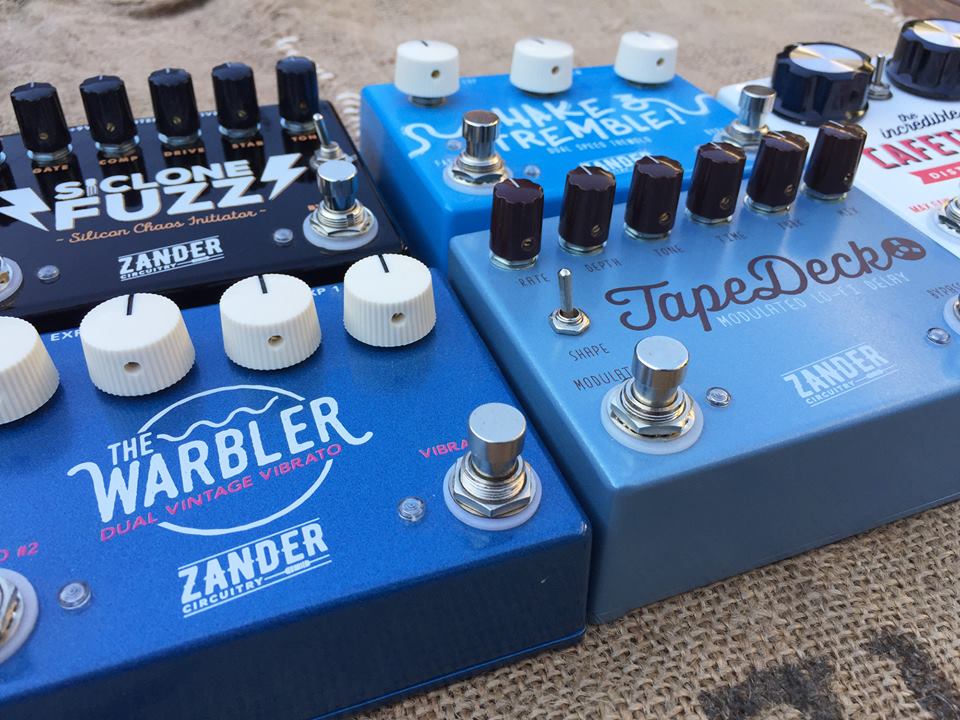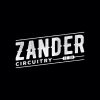Fuzzes, distortions, trems ..oh my! On this round of In The Spotlight we shine across the pond to the UK, where Alex Millar of Zander Circuitry is cooking up all sorts of killer effects. Read more on the Pedal Wizard Extraordinaire below!
[Mimmo]: How would you tell the story of Zander Circuitry?
[Zander]: I guess if we want to go back to the very beginning, long before I officially became Zander, it started with me selling some basic feedback looper pedals through some Facebook groups. I bought in enough enclosures/parts to make 20 and they all sold within 2 or 3 days. I was amazed at the interest they received and was so happy that it was something I had built from scratch that people wanted.
From there I started building some basic fuzz pedals loosely based on some existing circuits/ideas. In fact, the SiClone Fuzz actually kind of existed before Zander did, granted the sound of it has vastly changed as has much of the circuit. It started off as a slightly modified fuzz factory but it has now changed into something very different to the point that it’s relation to its original source isn’t that much at all anymore.

I realized that it was neither practical or overly ethical to keep selling this stuff on the Facebook groups that were predominantly meant for second hand gear, so I decided to turn it into a proper business and start selling through the bigger online outlets like eBay, Reverb, and my Website.
[Mimmo]: When you start thinking of building a new product where do you start? What is your design process like?
[Zander]: I’m my own worst enemy when it comes to thinking up new ideas because there are so many different ones floating around in my head it’s sometimes hard for me to sit and actually work on one thing because I sometimes worry I’ll forget the ideas I’m having. The good thing is it means that I’m always busy and always thinking about the next thing I can bring out. I don’t want to just release a line of pedals and then kick back, never releasing anything new; I want Zander to be a constantly evolving project and so far it has been just that. I’m not going to claim I know everything because that would be a lie, but I’m always striving to learn more and to bring better products to the table.
I’m one of those guys that learns “by-doing,” i.e. knowing that replacing a certain resistor or capacitor in a circuit will change the sound in a certain way, etc., etc. For me that is the most entertaining way to learn because my brain will just shut off if I spend too long looking at numbers and equations. Some of my best discoveries have come from just messing around with a circuit and stumbling upon a great sound.
If we take the American Geek as a basic example, I’ve always loved the muff sound; ever since hearing the Smashing Pumpkins album “Siamese Dream,” that is still, for me, one of the best guitar tones of all time. I’d tried A LOT of muff pedals before. Even an IC Muff clone someone had built (which was supposedly the model used on the album) and none of them really gave me “that sound.” So that right there was my mission: to build the sound of that album in a single box, and I think I managed to get pretty close, at least with my set up at home which is either a Roost SR20 (similar to Hiwatt) or Sound City 100 head into a 2×12″ cab loaded with an eminence tanker & swamp thang.
The design process can vary from something simpler like that, where I’m working into a pre-existing idea; or it can be very complex and sometimes frustrating when I’m trying to build a circuit from scratch. No single pedal has been designed in a consistent way/process so I guess it is a little chaotic in that respect, but I enjoy it that way.

[Mimmo]: Are there any particular sounds you wish to capture but haven’t quite hit?
[Zander]: Many, for every released pedal in my line-up you can guarantee there are at least a dozen failed ideas/iterations gathering dust in a cupboard behind it. I’ve eventually managed to release most of the sounds I’ve wanted to recreate but an ongoing project for me is to create some kind of lo-fi chorus/vibrato pedal. I don’t get much free time to work on it but every time I do I get a little closer to a product I would be happy to release. If you can imagine like a broken record that’s all twisted and crackly, that’s the sound I’m going for. Maybe one day it’ll be out for sale, but not for a while at least.
[Mimmo]: Choose a genre and build a pedalboard for a guitarist in your chosen genre. Which Zander Circuitry pedals would you select? Which products would you select outside of Zander Circuitry?
[Zander]: Well I’m not really sure what genre you’d put Dinosaur Jr. into (maybe alternative rock?) but it would definitely be for the mighty J Mascis. He is without doubt my favorite guitarist. I actually know what most of his pedalboard has on it but for the sake of this question I’ll pretend I don’t and choose other pedals. . .I’ll keep it to 6 for the sake of this interview:
Zander Circuitry Avalanche – This is my triple dirt pedal, the crunch channel would be perfect for lighter songs like “Crumble.” With the Drive & Fuzz channels being great for the heavier sounds such as “I Walk For Miles” from the newer album. It has that chewy mid-range sound that is just so awesome.
Zander Circuitry Shake & Tremble – Although he doesn’t use much tremolo on their recorded sounds I know live he uses this really fast and choppy tremolo for these trips rhythmic effects, the shake & tremble would be great for that as it can get super fast.
Stomp Under Foot Amherst – It is the big muff, it is such an awesome sounding pedal.
Raygun FX Superfuzzbender MKII – I know for a fact this pedal nails his lead tone because I own it, turn the volume all the way up, the fuzz all the way down and use it after an already distorted sound and that thing seriously rips.
Alexander Pedals F.13 Flanger – I know he uses a vintage EHX Electric Mistress but the F.13 is one of the best Flanger pedals I have ever heard. Alexander makes amazing, innovative pedals and they donate a portion of each sale to a great charity; I can only hope to one day know half as much as Matthew Farrow does.
DOD Rubberneck Delay – He uses delay sparingly but it is worth including. For me this pedal has been a standout release of late. It just sounds so unbelievably good.
Yeah, I’m pretty happy with those choices, I think you could do a great Dino set with those.
[Mimmo]: Are there any other pedal makers for which you have a definitive amount of respect? Any companies that you simply cannot get enough of?
[Zander]: Oh, this one is easy – Raygun FX.
I have an entire board of their pedals, including some custom ones I had made for me. I first got into their pedal before I started Zander and have had a few great lengthy discussions with owner/founder Steve. They’re based in the same country as me and it was cool to be supporting a local business. I’ve visited the workshop a few times and I guess that was partly the inspiration for me starting what I did; seeing someone so local to me make a living making these awesome pedals gave me the kick I needed to turn my hobby into a business.

[Mimmo]: Popular advice for learning how to design and build effects units usually bounces between purchasing kits and performing mods on existing pedals. Is this how you started? What advice might you have for “young players”?
[Zander]: I started with both, if I remember correctly my first kit was an LPB-1 booster that took me hours to build and even then it only worked intermittently. Getting good at soldering is the main thing, once you’ve nailed that putting together a kit is easy.
As for modding pedals: the first I did was change the footswitch on a Behringer vintage phaser (Small Stone clone). They use these little spring actuation switches that aren’t very good so I swapped it out for a proper mechanical switch, a silly little mod but at the time for me it was amazing to actually make an improvement to a commercial product.
I guess my advice would be to anyone interested in learning about effects pedals is just to buy as many kits as you can; build them, socket parts and experiment with changing the values of things, find out what that specific part does to a circuit and why. Fuzz pedals are usually pretty basic and fairly easy to understand so I’d may suggest starting with one of those.

[Mimmo]: The Internet, especially social media, is an incredible resource. How has it helped you in building Zander Circuitry?
[Zander]: Instagram has been the big one for me; I use Facebook and Twitter still but Instagram seems to be where it’s at for small pedal builders like myself. It’s allowed me to hit every corner of the globe in seconds, within the first few months of starting Zander I’d already posted to countries like Italy, Australia and the US; there is absolutely no way I could’ve done that without social media. It has given pedal builders a great platform to show their work off to their target audience very effectively.
[Mimmo]: Is Zander Circuitry considered a part-time hobby or do you do this full-time?
[Zander]: I wouldn’t say it is a hobby anymore, because hobbies generally don’t generate any revenue, but I do work a “real” full-time job on top of Zander as a graphic/web designer for an agency. It does mean long days of getting up at 5am and doing 2-3 hours of Zander stuff before heading to work, and then a few more hours when I get back, plus weekends are often non-existent for me but I like to be busy. I get incredibly bored if I am left with nothing to do and I think weirdly I thrive somewhere in that mix of being exhausted/busy/stressed, as odd as that may sound.
